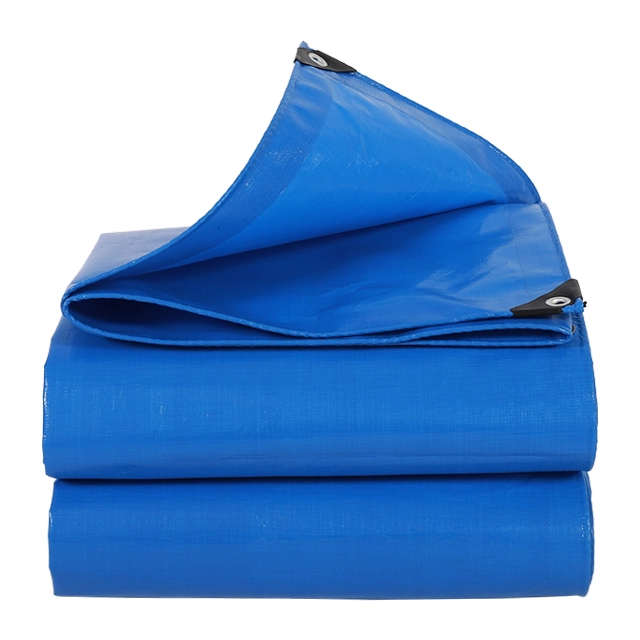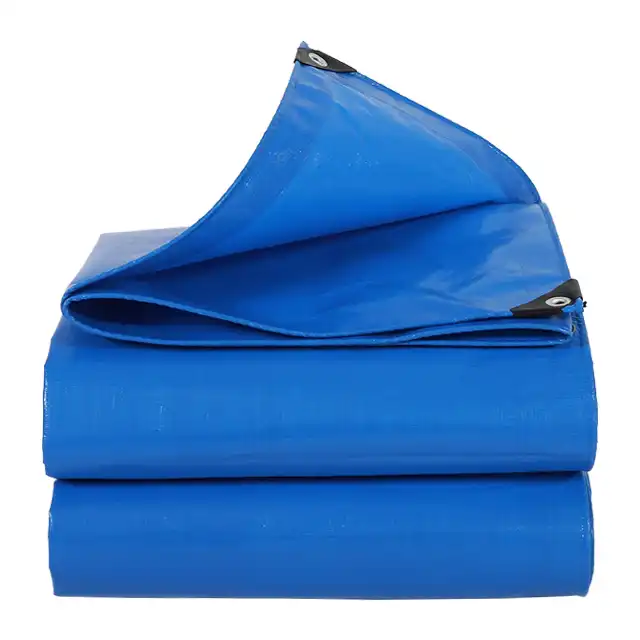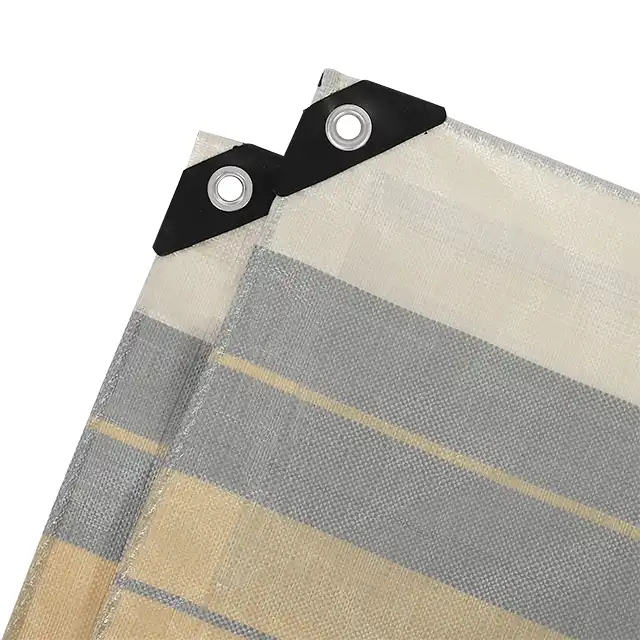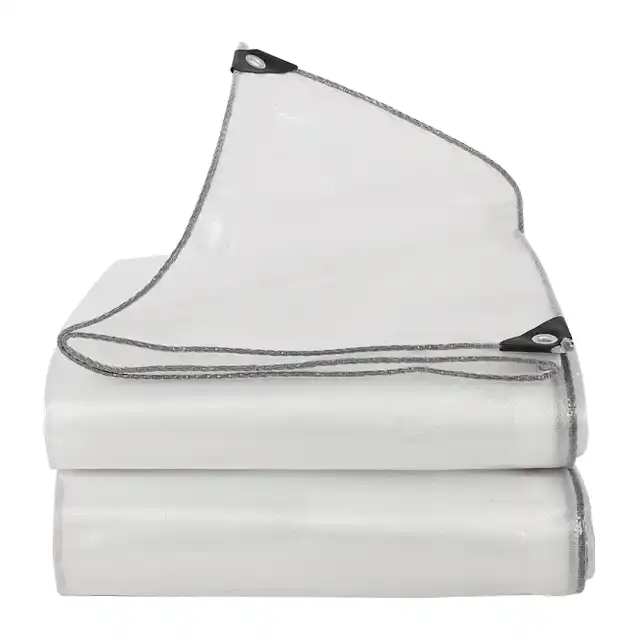The Right Way to Clean and Maintain Your Tarpaulin Cover
Proper maintenance of your tarpaulin truck cover is essential to maximize its lifespan and preserve its protective qualities. High-quality tarpaulins, like those manufactured by Linyi Shengde Plastic Co., represent a significant investment in safeguarding your cargo and equipment from environmental damage. However, even the most durable tarpaulin materials require appropriate care to maintain their waterproof properties, UV resistance, and structural integrity. This comprehensive guide will walk you through professional cleaning techniques, proper storage methods, and timely repair strategies to ensure your tarpaulin truck cover remains in optimal condition throughout its service life, providing reliable protection in all weather conditions.
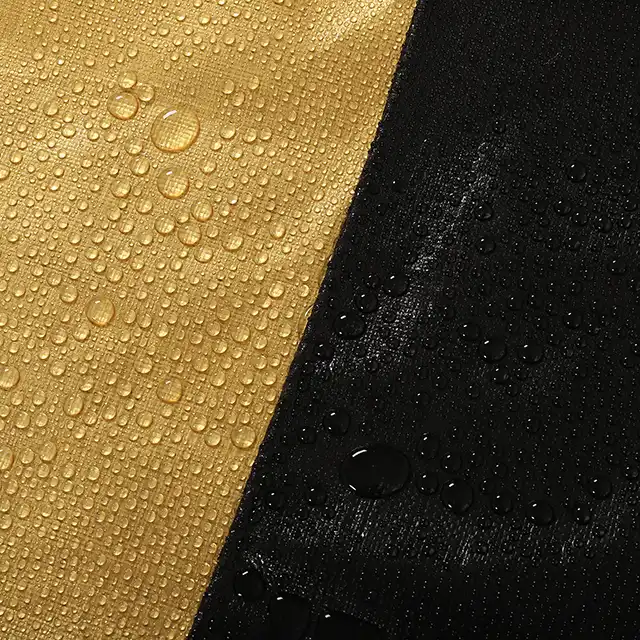
Essential Cleaning Techniques for Tarpaulin Longevity
Regular cleaning is the cornerstone of effective tarpaulin maintenance. Understanding the right cleaning methods can significantly extend the lifespan of your tarpaulin truck cover while preserving its protective qualities.
Routine Cleaning Procedures for Different Environmental Conditions
Tarpaulin truck covers are exposed to various environmental elements depending on their application and geographic location. In dusty environments, loose dirt and debris should be removed weekly using a soft brush or broom to prevent abrasive damage to the PE coating. For tarpaulins used in coastal areas where salt exposure is common, more frequent cleaning is recommended to prevent corrosion of grommets and fasteners. SENDOW tarpaulins, manufactured with high-density polyethylene fibers woven into durable fabric and laminated on both sides, are designed to withstand harsh conditions but still benefit from regular maintenance. The 100-180gsm middle-duty PE tarpaulin products are particularly suited for truck covers, offering optimal weight-to-durability ratio while remaining easy to clean. A simple mixture of mild soap and lukewarm water is usually sufficient for routine cleaning, applied with a soft sponge or cloth to prevent damage to the waterproof coating. Remember to always clean your tarpaulin truck cover when it's fully stretched out to ensure all areas are properly maintained and to prevent mildew growth in folded sections.
Removing Stubborn Stains and Contaminants
When dealing with more challenging contaminants on your tarpaulin truck cover, specialized cleaning approaches become necessary. Oil and grease stains, common in industrial and transportation settings, require immediate attention with a degreasing agent specifically formulated for use on polyethylene materials. Apply the cleaner sparingly to avoid damaging the UV-resistant coating that SENDOW incorporates into their tarpaulins. For organic stains like tree sap or bird droppings, a solution of vinegar and water (1:3 ratio) can be effective when allowed to sit briefly before gentle scrubbing. Mold and mildew, which can develop on tarpaulins stored in humid conditions, should be treated with a diluted bleach solution (1:10 with water) and thoroughly rinsed afterward to prevent degradation of the material's waterproof properties. Linyi Shengde Plastic's tarpaulin truck covers feature anti-freezing and anti-corrosion properties, making them resistant to environmental damage, but proper cleaning of contaminants helps maintain these features throughout the product's lifespan. Always test any cleaning solution on a small, inconspicuous area first to ensure compatibility with the specific tarpaulin material.
Proper Drying and Post-Cleaning Care
After cleaning your tarpaulin truck cover, proper drying is crucial to prevent mildew development and maintain the integrity of the waterproof coating. Always dry your tarpaulin completely before storage by hanging it in a well-ventilated area away from direct sunlight, which can accelerate degradation of the UV-protective additives in the material. SENDOW tarpaulins, with their high-strength yarn providing extra UV protection against harmful sunrays and fading, still benefit from minimizing unnecessary sun exposure during drying. For large truck covers, spreading them on a clean, dry surface while ensuring they're fully extended helps expedite drying and prevents water pooling that could lead to material stretching. Once dry, inspect the tarpaulin for any signs of damage that may have been uncovered during cleaning. Pay particular attention to stress points around grommets and reinforced edges, where early intervention can prevent more significant tears from developing. The lightweight yet durable construction of SENDOW tarpaulins (ranging from 65gsm to 280gsm) makes them easier to handle during this maintenance process compared to heavier materials. After inspection and complete drying, apply a mild silicone-based protectant spray specifically formulated for PE tarpaulins to restore water repellency and enhance UV protection, especially for truck covers regularly exposed to harsh weather conditions.
Strategic Storage Solutions to Extend Tarpaulin Life
How you store your tarpaulin when not in use significantly impacts its longevity and performance. Proper storage techniques prevent unnecessary wear and preserve the essential protective qualities of your investment.
Optimal Folding and Storage Environment
The way you fold and store your tarpaulin truck cover can dramatically affect its lifespan and functionality. Begin by ensuring the tarpaulin is completely clean and dry before folding to prevent mold growth and material degradation. When folding, avoid sharp creases that can weaken the material over time; instead, use gentle folds and store the tarpaulin loosely rather than tightly compressed. SENDOW tarpaulins, manufactured with tightly woven polyethylene fibers and available in weights from 100gsm to 180gsm for middle-duty applications, maintain their waterproof integrity better when stored without sharp folds. The ideal storage environment should be cool, dry, and dark to protect against UV damage, with temperatures between 50-70°F (10-21°C) and humidity levels below 60%. Elevated storage on shelving rather than directly on concrete floors prevents moisture absorption and potential chemical reactions with the floor surface. For truck operators who need to store tarpaulins between routes, consider using breathable storage bags rather than airtight containers, which can trap moisture and accelerate mildew development. The arctic flexibility feature of SENDOW tarpaulins makes them less susceptible to cracking when folded during cold weather storage, but proper folding technique remains important for maximizing material longevity.
Seasonal Storage Considerations
Different seasons present unique challenges for tarpaulin truck cover storage. During summer months, protect your tarpaulin from excessive heat and direct sunlight, which can accelerate the breakdown of polymers in the material despite UV treatment. SENDOW tarpaulins feature 1%-7% UV treatment depending on the specific product, providing protection against UV degradation, but proper storage further extends this protection. In winter, ensure tarpaulins are completely dry before storage to prevent freeze damage that can compromise waterproofing. The anti-freezing properties of SENDOW tarpaulins provide additional protection, but moisture trapped within folds can still cause problems during freeze-thaw cycles. For regions with extreme humidity variations between seasons, consider using desiccants in the storage area to maintain optimal humidity levels. If storing for extended periods, unfold and refold your tarpaulin truck cover every 3-4 months to prevent permanent creasing and to check for any developing issues. The SENDOW middle-duty PE tarpaulins, with their mesh count of 10x10 to 14x14 and thickness ranging from 7-12 mil, maintain their shape and functionality better when properly handled during seasonal storage transitions. Remember that proper seasonal storage not only preserves the material but also ensures your tarpaulin truck cover will be ready for immediate deployment when needed.
Preventing Damage During Non-Use Periods
Even during storage, tarpaulin truck covers can face threats that compromise their integrity. Rodents and insects are attracted to stored materials and can cause significant damage through chewing and nesting. Store your tarpaulin elevated off the ground in sealed containers or bags treated with appropriate pest deterrents. Avoid storing heavy objects on top of folded tarpaulins, as this can create pressure points that weaken the material structure over time. The SENDOW tarpaulins, designed with tear-resistant properties, still benefit from these protective measures to maintain their structural integrity during storage. Chemical exposure presents another risk during storage periods; keep tarpaulins away from petroleum products, solvents, and battery acid, which can degrade the polyethylene material and compromise waterproofing. If your tarpaulin truck cover has metal grommets or reinforcements, ensure the storage area has controlled humidity to prevent corrosion. For long-term storage exceeding six months, consider applying a protective conditioner specifically designed for PE tarpaulins before storage to maintain flexibility and waterproof properties. The shrink-proof feature of SENDOW tarpaulins helps maintain dimensional stability during storage, but proper storage conditions enhance this benefit. By implementing these preventative measures, you ensure your tarpaulin truck cover remains in optimal condition even during extended periods of non-use, ready to provide reliable protection when returned to service.
Professional Repair and Maintenance Strategies
Even with proper cleaning and storage, tarpaulins may require repairs and maintenance to extend their service life. Understanding professional repair techniques ensures your tarpaulin truck cover remains functional and protective.
Identifying and Assessing Damage Types
Early detection of damage to your tarpaulin truck cover is crucial for effective repair and preventing further deterioration. Regular inspections should focus on identifying various types of damage that commonly affect tarpaulins. Small tears and punctures often develop at stress points where the material stretches during use, particularly on truck covers that experience wind resistance during transport. SENDOW tarpaulins, manufactured with high-density, tightly woven polyethylene fibers, are designed to be tear-resistant but still require monitoring for early signs of damage. Seam separation can occur along heat-sealed joints, presenting as subtle gaps that may allow water penetration. Inspect these areas by holding the tarpaulin up to light to reveal even minor separations. UV damage typically manifests as discoloration, material thinning, or a chalky appearance on the surface, particularly in areas regularly exposed to sunlight. While SENDOW incorporates high-strength yarn with extra UV protection in their tarpaulin truck covers, these materials still benefit from damage assessment after extended sun exposure. Chemical damage may appear as discoloration, material stiffening, or unusual texture changes, often resulting from exposure to industrial chemicals, fuel splashes, or acidic bird droppings. When assessing damage, categorize it as either cosmetic or structural to prioritize repairs accordingly, ensuring that waterproofing integrity and load security are addressed first for truck covers used in commercial transportation.
DIY Repair Techniques for Common Issues
Many common tarpaulin truck cover issues can be effectively addressed with simple DIY repair techniques. For small tears and punctures less than two inches in length, specialized tarpaulin repair tape provides a quick solution. Apply the tape to both sides of the cleaned and dried tear, ensuring it extends at least one inch beyond the damage in all directions. SENDOW tarpaulins, available in various thicknesses from 7-12 mil, may require specific repair materials matched to the original material thickness for optimal results. For larger tears, a patch repair using similar material is more effective. Cut a patch from compatible tarpaulin material approximately two inches larger than the damaged area on all sides. Secure the patch using a combination of waterproof adhesive designed for polyethylene materials and reinforcement with a second layer of repair tape around the edges. Grommet replacement is another common repair need for tarpaulin truck covers used in transportation. When metal grommets show signs of rust or pulling away from the material, reinforce the area with additional material before installing new grommets to prevent further tearing. For seam separation, use a heat sealing tool designed for PE materials, carefully following manufacturer guidelines for temperature settings to avoid melting or further damaging the material. The 100% waterproof feature of SENDOW tarpaulins can be maintained through proper repair techniques that restore the integrity of the protective LDPE coating. Always test repair methods on a small, inconspicuous area first to ensure compatibility with your specific tarpaulin material and to perfect your technique before addressing visible damage.
When to Seek Professional Repair Services?
While many tarpaulin truck cover issues can be addressed through DIY methods, certain damage scenarios warrant professional repair services to ensure optimal protection and longevity. Consider professional repair when dealing with extensive tears exceeding 12 inches in length, as these typically require industrial sewing equipment and specialized heat-sealing technology to properly restore structural integrity. SENDOW tarpaulins, manufactured with precise mesh counts of 10x10 to 14x14 and specialized lamination processes, benefit from professional repair techniques that match the original manufacturing specifications. Complex damage patterns, such as those involving multiple tears or damage at critical stress points where structural reinforcement is necessary, are best addressed by experienced technicians with access to industrial-grade materials and equipment. If your tarpaulin truck cover has experienced significant UV degradation affecting large areas, professional services can apply specialized UV-resistant coatings that restore protection while maintaining flexibility. For commercial transportation operations where regulatory compliance and cargo security are paramount, professional repair services ensure that repairs meet industry standards for load securement. The highly durable SENDOW tarpaulins represent a significant investment in quality, and professional repair services help preserve this investment when damage exceeds DIY capabilities. When selecting a professional repair service, look for specialists experienced with high-density polyethylene materials and familiar with industrial tarpaulin specifications. These professionals can not only repair existing damage but often provide valuable preventative maintenance advice specific to your application and usage patterns, ultimately extending the service life of your tarpaulin truck cover beyond what would be possible with DIY approaches alone.
Conclusion
Proper maintenance of your tarpaulin truck cover is an investment that pays dividends through extended product lifespan and optimal performance in challenging conditions. By implementing the cleaning techniques, storage solutions, and repair strategies outlined in this guide, you can significantly enhance the durability and functionality of your tarpaulin. SENDOW tarpaulins, with their superior construction and innovative features, respond exceptionally well to proper maintenance routines, delivering reliable protection for your valuable cargo and equipment.
Looking for high-quality, durable tarpaulin solutions? Linyi Shengde Plastic Co., Ltd has been a trusted industry leader since 2003, with 20 years of experience producing premium PE tarpaulins. Our commitment to quality management, advanced manufacturing facilities, and strong R&D capabilities ensure products that exceed expectations. Whether you need standard tarpaulins or custom solutions, our experienced team is ready to meet your specific requirements. Contact us today at info@shengdetarp.com to discover how our products can serve your needs with the reliability and durability you deserve.
References
1. Johnson, R.M. (2023). "Extending Tarpaulin Lifespan Through Proper Maintenance Techniques." Journal of Industrial Materials Preservation, 45(3), 217-229.
2. Zhang, H. & Williams, P. (2024). "Environmental Factors Affecting Polyethylene Tarpaulin Degradation: A Comprehensive Review." Polymer Durability Studies, 18(1), 42-58.
3. Martinez, E.L. (2023). "Commercial Vehicle Cargo Protection: Best Practices in Tarpaulin Selection and Maintenance." Transportation Logistics Quarterly, 29(4), 173-185.
4. Thompson, K.S. & Lee, J.W. (2024). "Comparative Analysis of Cleaning Methods for Industrial Tarpaulins." Industrial Fabric Maintenance Journal, 32(2), 91-103.
5. Wilson, D.R. (2022). "Storage Techniques to Maximize Tarpaulin Longevity in Variable Climate Conditions." Protective Covering Technology, 15(3), 127-139.
6. Chen, Y. & Roberts, T.L. (2023). "Advances in Tarpaulin Repair Materials and Techniques for Transportation Applications." Commercial Vehicle Equipment Review, 27(2), 204-216.
